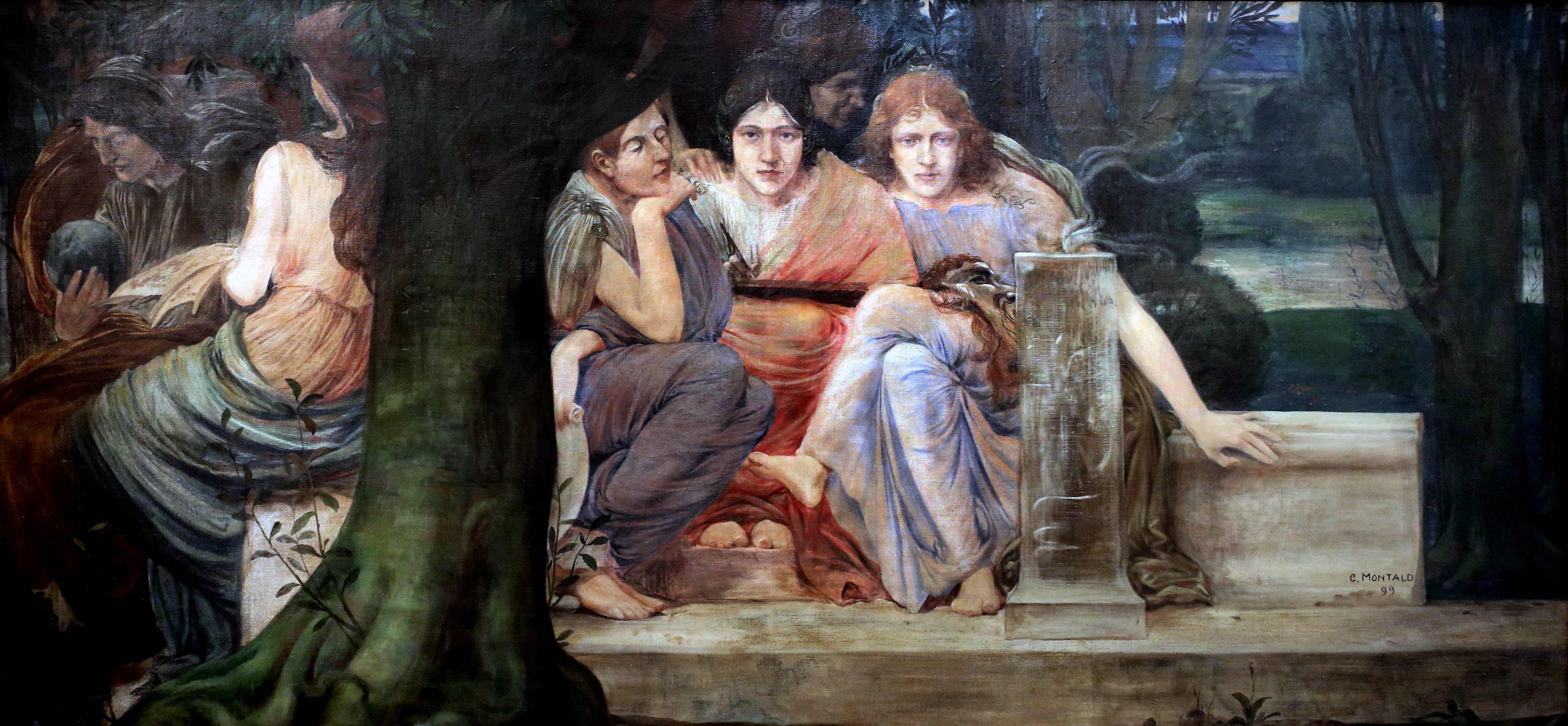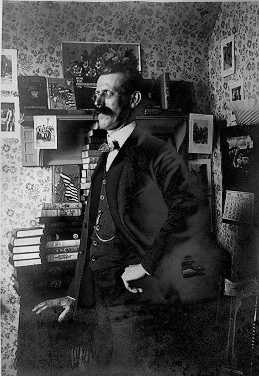|
Chicago Ledger
The ''Chicago Ledger'' was a story paper published in Chicago, Illinois from 1872 until 1924. Put out by the Ledger Company and edited by Samuel H. Williams, the ''Ledger'' was a boilerplate literary magazine. Such periodicals were printed using engraved steel sheets. The plates, or casts of them, were then sent out to be printed and inserted into other newspapers. ''Ledger'' subscriptions originally sold for $1 for 52 issues and, by 1879, the paper had a circulation of 10,000. Although begun as a literary paper of "a good class," the ''Ledger'' eventually became more melodramatic in tone. In his 1910 book, Newspapers and Periodicals of Illinois, Franklin Scott, notes that " e sensational, although not immoral, character of the Ledger stories, and the use that the large mail-order houses have made of its advertising columns, have given this paper an unusually long life and extensive circulation." In 1892, William D. Boyce, who helped to found the Boy Scouts of America and later t ... [...More Info...] [...Related Items...] OR: [Wikipedia] [Google] [Baidu] |
Edward Stratemeyer
Edward L. Stratemeyer (; October 4, 1862 – May 10, 1930) was an American publisher, writer of children's fiction, and founder of the Stratemeyer Syndicate. He was one of the most prolific writers in the world, producing in excess of 1,300Omnibus II (2005). Veritas Press. p. 148. books himself, selling in excess of 500 million copies. He also created many well-known fictional book series for juveniles, including The Rover Boys, The Bobbsey Twins, Tom Swift, The Hardy Boys, and Nancy Drew series, many of which sold millions of copies and remain in publication. On Stratemeyer's legacy, '' Fortune'' wrote: "As oil had its Rockefeller, literature had its Stratemeyer." Early life Stratemeyer was born the youngest of six children in Elizabeth, New Jersey, to Henry Julius Stratemeyer, a tobacconist, and Anna Siegel. They were both from Hanover, Germany, immigrating to the United States in 1837. Although they were German, he and his siblings were educated in English and spoke ... [...More Info...] [...Related Items...] OR: [Wikipedia] [Google] [Baidu] |
Magazines Published In Chicago
A magazine is a periodical publication, generally published on a regular schedule (often weekly or monthly), containing a variety of content. They are generally financed by advertising, purchase price, prepaid subscriptions, or by a combination of the three. Definition In the technical sense a ''journal'' has continuous pagination throughout a volume. Thus ''Business Week'', which starts each issue anew with page one, is a magazine, but the ''Journal of Business Communication'', which continues the same sequence of pagination throughout the coterminous year, is a journal. Some professional or trade publications are also peer-reviewed, for example the '' Journal of Accountancy''. Non-peer-reviewed academic or professional publications are generally ''professional magazines''. That a publication calls itself a ''journal'' does not make it a journal in the technical sense; ''The Wall Street Journal'' is actually a newspaper. Etymology The word "magazine" derives from Arabic , ... [...More Info...] [...Related Items...] OR: [Wikipedia] [Google] [Baidu] |
Magazines Disestablished In 1924
A magazine is a periodical publication, generally published on a regular schedule (often weekly or monthly), containing a variety of content. They are generally financed by advertising, purchase price, prepaid subscriptions, or by a combination of the three. Definition In the technical sense a '' journal'' has continuous pagination throughout a volume. Thus ''Business Week'', which starts each issue anew with page one, is a magazine, but the ''Journal of Business Communication'', which continues the same sequence of pagination throughout the coterminous year, is a journal. Some professional or trade publications are also peer-reviewed, for example the '' Journal of Accountancy''. Non-peer-reviewed academic or professional publications are generally ''professional magazines''. That a publication calls itself a ''journal'' does not make it a journal in the technical sense; '' The Wall Street Journal'' is actually a newspaper. Etymology The word "magazine" derives from Arabic ... [...More Info...] [...Related Items...] OR: [Wikipedia] [Google] [Baidu] |
Magazines Established In 1872
A magazine is a periodical publication, generally published on a regular schedule (often weekly or monthly), containing a variety of content. They are generally financed by advertising, purchase price, prepaid subscriptions, or by a combination of the three. Definition In the technical sense a ''journal'' has continuous pagination throughout a volume. Thus ''Business Week'', which starts each issue anew with page one, is a magazine, but the ''Journal of Business Communication'', which continues the same sequence of pagination throughout the coterminous year, is a journal. Some professional or trade publications are also peer-reviewed, for example the '' Journal of Accountancy''. Non-peer-reviewed academic or professional publications are generally ''professional magazines''. That a publication calls itself a ''journal'' does not make it a journal in the technical sense; ''The Wall Street Journal'' is actually a newspaper. Etymology The word "magazine" derives from Arabic ... [...More Info...] [...Related Items...] OR: [Wikipedia] [Google] [Baidu] |
Defunct Literary Magazines Published In The United States
{{Disambiguation ...
Defunct (no longer in use or active) may refer to: * ''Defunct'' (video game), 2014 * Zombie process or defunct process, in Unix-like operating systems See also * * :Former entities * End-of-life product * Obsolescence Obsolescence is the state of being which occurs when an object, service, or practice is no longer maintained or required even though it may still be in good working order. It usually happens when something that is more efficient or less risky r ... [...More Info...] [...Related Items...] OR: [Wikipedia] [Google] [Baidu] |
Literary Genres
A literary genre is a category of literature. Genres may be determined by literary technique, tone, content, or length (especially for fiction). They generally move from more abstract, encompassing classes, which are then further sub-divided into more concrete distinctions. The distinctions between genres and categories are flexible and loosely defined, and even the rules designating genres change over time and are fairly unstable. Genres can all be in the form of prose or poetry. Additionally, a genre such as satire, allegory or pastoral might appear in any of the above, not only as a subgenre (see below), but as a mixture of genres. Finally, they are defined by the general cultural movement of the historical period in which they were composed. History of genres Aristotle The concept of genre began in the works of Aristotle, who applied biological concepts to the classification of literary genres, or, as he called them, "species" (eidē). These classifications are mainly ... [...More Info...] [...Related Items...] OR: [Wikipedia] [Google] [Baidu] |
Nancy Drew
Nancy Drew is a Fictional character, fictional character appearing in several Mystery fiction, mystery book series, movies, and a TV show as a teenage amateur sleuth. The books are ghostwriter, ghostwritten by a number of authors and published under the collective pseudonym Carolyn Keene. Created by the publisher Edward Stratemeyer as the female counterpart to his Hardy Boys series, the character first appeared in 1930 in the ''Nancy Drew Mystery Stories'' series, which lasted until 2003 and consisted of 175 novels. Over the decades, the character has evolved in response to changes in American culture and tastes. Beginning in 1959, the books were extensively revised and shortened, partly to lower the printing costsRehak (2006), 243. with arguable success.Rehak (2006), 248. In the revision process, the heroine's original character was changed to be less unruly and violent.Lapin (1989). In the 1980s, an older and more professional Nancy emerged in a new series, ''The Nancy Drew Fi ... [...More Info...] [...Related Items...] OR: [Wikipedia] [Google] [Baidu] |
Bobbsey Twins
The Bobbsey Twins are the principal characters of what was, for 75 years, the Stratemeyer Syndicate's longest-running series of American children's novels, written under the pseudonym Laura Lee Hope. The first of 72 books was published in 1904, the last in 1979, with a separate series of 30 books published from 1987 through 1992. The books related the adventures of the children of the upper-middle-class Bobbsey family, which included two sets of fraternal twins: Nan and Bert, who were twelve years old, and Flossie and Freddie, who were six. Authorship Edward Stratemeyer is believed to be the writer of the first volume in its original form in 1904. When the original series was brought to its conclusion in 1979, it reached a total of 72 volumes. At least two attempts to restart the series were launched after this, but neither effort saw the popularity the original series achieved. Speculation that Stratemeyer also wrote the second and third volumes of the series is believed to b ... [...More Info...] [...Related Items...] OR: [Wikipedia] [Google] [Baidu] |
The Hardy Boys
The Hardy Boys, brothers Frank and Joe Hardy, are fictional characters who appear in several mystery series for children and teens. The series revolves around teenagers who are amateur sleuths, solving cases that stumped their adult counterparts. The characters were created by American writer Edward Stratemeyer, the founder of book-packaging firm Stratemeyer Syndicate. The books themselves were written by several ghostwriters, most notably Leslie McFarlane, under the collective pseudonym Franklin W. Dixon. The Hardy Boys have evolved since their debut in 1927. From 1959 to 1973, the first 38 books were extensively revised, largely to remove depictions of racial stereotypes; they were also targeted towards younger readers by being rewritten in a simpler, action-oriented style to compete with television. A new ''Hardy Boys'' series, the ''Hardy Boys Casefiles'', was created in 1987, and featured murders, violence, and international espionage. The original "Hardy Boys Mys ... [...More Info...] [...Related Items...] OR: [Wikipedia] [Google] [Baidu] |
Stratemeyer Syndicate
The Stratemeyer Syndicate was a publishing company that produced a number of mystery book series for children, including Nancy Drew, The Hardy Boys, the various Tom Swift series, the Bobbsey Twins, the Rover Boys, and others. They published and contracted the many pseudonymous authors doing the writing of the series from 1899 through 1987, when the syndicate partners sold the company to Simon & Schuster. History Created by Edward Stratemeyer, the Stratemeyer Syndicate was the first book packager to have its books aimed at children, rather than adults. The Syndicate was wildly successful; at one time it was believed that the overwhelming majority of the books children read in the United States were Stratemeyer Syndicate books, based on a 1922 study of over 36,000 children country-wide. Stratemeyer's business acumen was in realizing that there was a huge, untapped market for children's books. The Stratemeyer Syndicate specialized in producing books that were meant prim ... [...More Info...] [...Related Items...] OR: [Wikipedia] [Google] [Baidu] |
Charles W
The F/V ''Charles W'', also known as Annie J Larsen, is a historic fishing schooner anchored in Petersburg, Alaska. At the time of its retirement in 2000, it was the oldest fishing vessel in the fishing fleet of Southeast Alaska, and the only known wooden fishing vessel in the entire state still in active service. Launched in 1907, she was first used in the halibut fisheries of Puget Sound and the Bering Sea as the ''Annie J Larsen''. In 1925 she was purchased by the Alaska Glacier Seafood Company, refitted for shrimp trawling, and renamed ''Charles W'' in honor of owner Karl Sifferman's father. The company was one of the pioneers of the local shrimp fishery, a business it began to phase out due to increasing competition in the 1970s. The ''Charles W'' was the last of the company's fleet of ships, which numbered twelve at its height. The boat was acquired in 2002 by the nonprofit Friends of the ''Charles W''. The boat was listed on the National Register of Historic Place ... [...More Info...] [...Related Items...] OR: [Wikipedia] [Google] [Baidu] |






